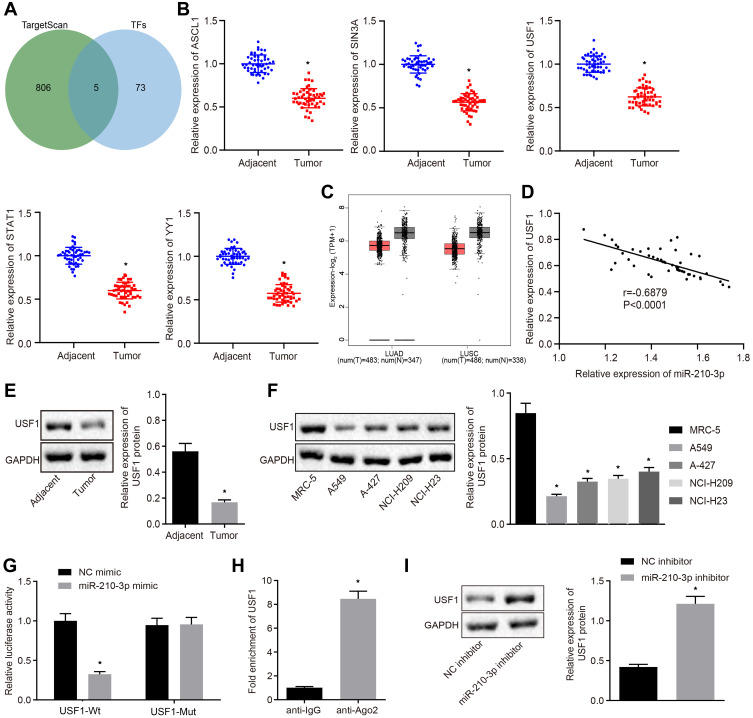Figure 3.
Transcription factor USF1 is the target gene of miR-210-3p in A549 cells. (A) Venn plot showing 5 common transcription factors as putative miR-210-3p targets, ASCL1, SIN3A, USF1, STAT1, and YY1 between the hTFtarget database (http://bioinfo.life.hust.edu.cn/hTFtarget#!/) and TargetScan database (http://www.targetscan.org/vert_71/). (B) Real-time qPCR examined the expression of ASCL1, SIN3A, USF1, STAT1, and YY1 in 50 tumor lung tissues compared to matched tumor-free lung tissues. (C) USF1 was poorly expressed in lung adenocarcinoma and lung squamous cell carcinoma compared to normal tissues in TCGA and GTEx databases (http://gepia2.cancer-pku.cn/#index). (D) Pearson’s correlation analysis demonstrated a negative correlation between the expression of miR-210-3p and USF1 in lung cancer tissues. (E and F) Immunoblots and quantification of USF1 in tumor lung tissues (n = 50), matched tumor-free lung tissues (n = 50), lung cancer cell lines (A549, A-427, NCI-H209, and NCI-H23), and MRC-5. (G) Luciferase activity at the promoter of the reporter gene containing USF1-Wt and USF1-Mut in response to miR-210-3p-mimic treatment in HEK-293T cells. (H) USF1 was enriched at the AGO2 promoter region in the immunoprecipitation using anti-AGO2 antibody relative to normal IgG. (I) Immunoblots and quantification of USF1 in A549 cells treated with miR-210-3p inhibitor. *p < 0.05 compared to matched tumor-free lung tissues by paired t-test, to MRC-5 by ANOVA adjusted by Tukey’s test, to NC mimic, normal IgG, and NC inhibitor by unpaired t-test.

